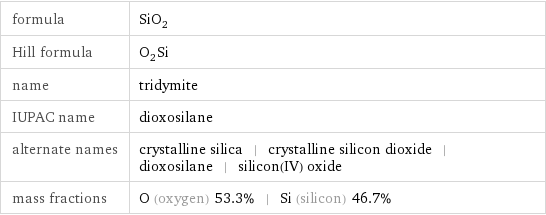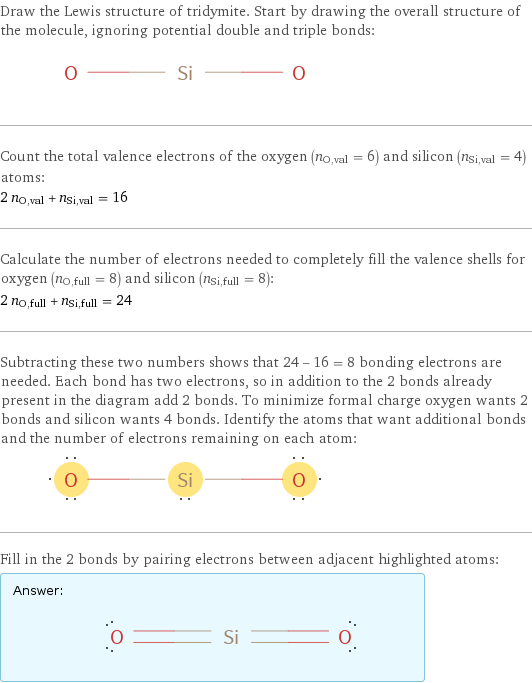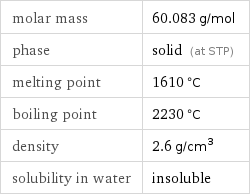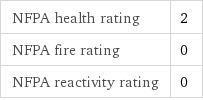Input interpretation

tridymite
Chemical names and formulas

formula | SiO_2 Hill formula | O_2Si name | tridymite IUPAC name | dioxosilane alternate names | crystalline silica | crystalline silicon dioxide | dioxosilane | silicon(IV) oxide mass fractions | O (oxygen) 53.3% | Si (silicon) 46.7%
Lewis structure

Draw the Lewis structure of tridymite. Start by drawing the overall structure of the molecule, ignoring potential double and triple bonds: Count the total valence electrons of the oxygen (n_O, val = 6) and silicon (n_Si, val = 4) atoms: 2 n_O, val + n_Si, val = 16 Calculate the number of electrons needed to completely fill the valence shells for oxygen (n_O, full = 8) and silicon (n_Si, full = 8): 2 n_O, full + n_Si, full = 24 Subtracting these two numbers shows that 24 - 16 = 8 bonding electrons are needed. Each bond has two electrons, so in addition to the 2 bonds already present in the diagram add 2 bonds. To minimize formal charge oxygen wants 2 bonds and silicon wants 4 bonds. Identify the atoms that want additional bonds and the number of electrons remaining on each atom: Fill in the 2 bonds by pairing electrons between adjacent highlighted atoms: Answer: | |
Basic properties

molar mass | 60.083 g/mol phase | solid (at STP) melting point | 1610 °C boiling point | 2230 °C density | 2.6 g/cm^3 solubility in water | insoluble
Units

Solid properties (at STP)

density | 2.6 g/cm^3
Units

Chemical identifiers
![CAS number | 15468-32-3 SMILES identifier | O=[Si]=O InChI identifier | InChI=1/O2Si/c1-3-2 EU number | 239-487-1 Gmelin number | 77370 RTECS number | VV7335000](../image_source/1d0d1538116f2aaf00e3bf419f40b78d.png)
CAS number | 15468-32-3 SMILES identifier | O=[Si]=O InChI identifier | InChI=1/O2Si/c1-3-2 EU number | 239-487-1 Gmelin number | 77370 RTECS number | VV7335000
NFPA label

NFPA label

NFPA health rating | 2 NFPA fire rating | 0 NFPA reactivity rating | 0
Toxicity properties

RTECS classes | tumorigen | mutagen | human data